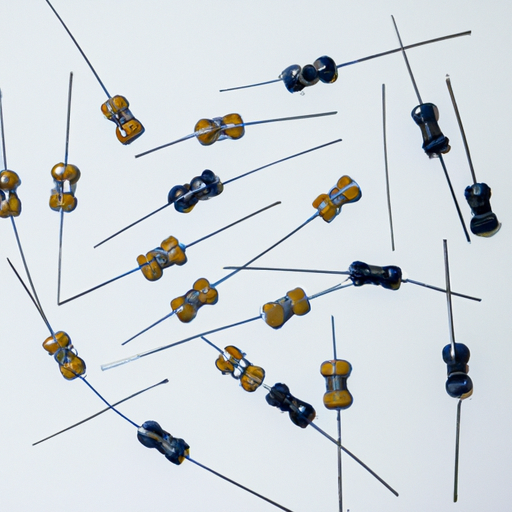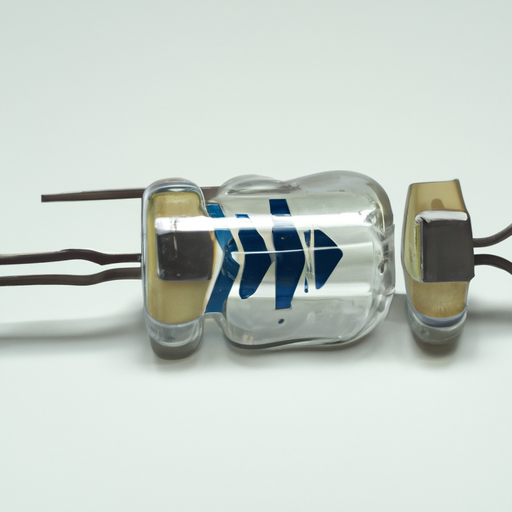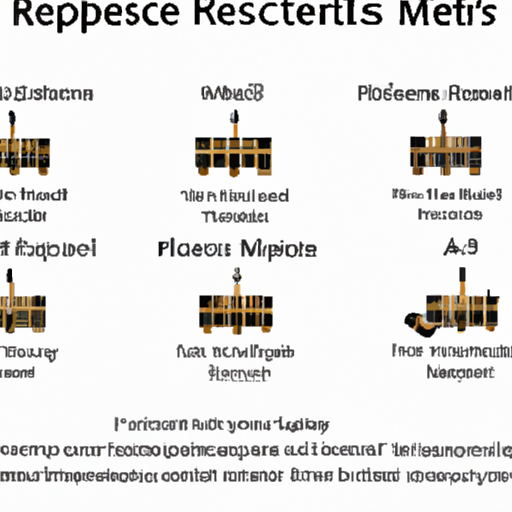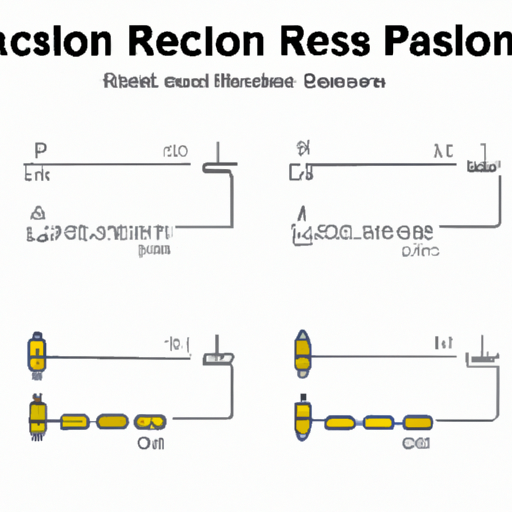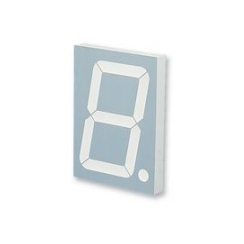What are the popular models of resistor 4?
What are the Popular Models of Resistor 4?
I. Introduction
Resistors are fundamental components in electronic circuits, serving as the backbone for controlling current flow and voltage levels. Among the various types of resistors, Resistor 4 stands out due to its unique characteristics and applications. This article aims to explore the popular models of Resistor 4, their specifications, and their significance in modern electronics.
II. Understanding Resistor Basics
A. What is a Resistor?
A resistor is a passive electronic component that resists the flow of electric current, creating a voltage drop across its terminals. The primary function of a resistor is to limit current, divide voltages, and dissipate energy in the form of heat. Resistors are essential in various applications, from simple circuits to complex electronic devices.
1. Function and Purpose in Circuits
In electronic circuits, resistors are used for several purposes, including:
Current Limiting: Protecting sensitive components from excessive current.
Voltage Division: Creating specific voltage levels for different parts of a circuit.
Signal Conditioning: Modifying signals to ensure proper operation of devices.
2. Types of Resistors
Resistors come in various types, each designed for specific applications. The most common types include carbon film, metal film, wirewound, thick film, thin film, and specialty resistors.
B. Key Specifications
When selecting a resistor, several key specifications must be considered:
1. Resistance Value
Measured in ohms (Ω), the resistance value determines how much current will flow through the resistor for a given voltage.
2. Power Rating
The power rating, expressed in watts (W), indicates the maximum power the resistor can dissipate without overheating.
3. Tolerance
Tolerance refers to the allowable deviation from the specified resistance value, usually expressed as a percentage. A lower tolerance indicates higher precision.
4. Temperature Coefficient
This specification indicates how much the resistance value changes with temperature, which is crucial for maintaining performance in varying environmental conditions.
III. The Role of Resistor 4 in Electronics
A. Applications of Resistor 4
Resistor 4 plays a vital role in various electronic applications:
1. Voltage Division
Resistor 4 is often used in voltage divider circuits, allowing designers to obtain a desired voltage level from a higher voltage source.
2. Current Limiting
In LED circuits, Resistor 4 is used to limit the current flowing through the LED, preventing damage and ensuring optimal brightness.
3. Signal Conditioning
Resistor 4 is essential in signal conditioning circuits, where it helps filter and modify signals for better performance.
B. Importance in Various Electronic Devices
Resistor 4 is found in a wide range of electronic devices, including:
1. Consumer Electronics
From smartphones to televisions, Resistor 4 is crucial in managing power and signal integrity.
2. Industrial Applications
In industrial machinery, Resistor 4 helps control motors and sensors, ensuring efficient operation.
3. Automotive Systems
Modern vehicles rely on Resistor 4 for various functions, including engine control and safety systems.
IV. Popular Models of Resistor 4
A. Carbon Film Resistors
1. Characteristics
Carbon film resistors are made by depositing a thin layer of carbon on a ceramic substrate. They offer a resistance range from a few ohms to several megaohms.
2. Advantages and Disadvantages
**Advantages**:
- Cost-effective
- Good stability and reliability
**Disadvantages**:
- Limited precision compared to metal film resistors
- Higher noise levels
3. Common Applications
Carbon film resistors are widely used in general-purpose applications, such as audio equipment and consumer electronics.
B. Metal Film Resistors
1. Characteristics
Metal film resistors are constructed using a thin metal film, providing higher precision and stability.
2. Advantages and Disadvantages
**Advantages**:
- High accuracy and low noise
- Excellent temperature stability
**Disadvantages**:
- More expensive than carbon film resistors
3. Common Applications
These resistors are commonly used in precision circuits, such as instrumentation and audio applications.
C. Wirewound Resistors
1. Characteristics
Wirewound resistors are made by winding a metal wire around a ceramic or fiberglass core. They can handle high power ratings.
2. Advantages and Disadvantages
**Advantages**:
- High power handling capability
- Excellent stability
**Disadvantages**:
- Larger size
- Inductance can affect high-frequency applications
3. Common Applications
Wirewound resistors are often used in power supplies and high-current applications.
D. Thick Film Resistors
1. Characteristics
Thick film resistors are made by printing a resistive paste onto a substrate, offering a wide range of resistance values.
2. Advantages and Disadvantages
**Advantages**:
- Cost-effective for mass production
- Good performance in various conditions
**Disadvantages**:
- Lower precision compared to thin film resistors
3. Common Applications
These resistors are commonly used in consumer electronics and automotive applications.
E. Thin Film Resistors
1. Characteristics
Thin film resistors are made by depositing a thin layer of resistive material, providing high precision and stability.
2. Advantages and Disadvantages
**Advantages**:
- High accuracy and low temperature coefficient
- Excellent performance in high-frequency applications
**Disadvantages**:
- Higher cost
3. Common Applications
Thin film resistors are used in precision measurement and high-performance circuits.
F. Specialty Resistors
1. Variable Resistors (Potentiometers)
Variable resistors allow users to adjust resistance manually, making them ideal for applications like volume controls.
2. Photoresistors
Photoresistors change resistance based on light exposure, commonly used in light-sensitive applications.
3. Thermistors
Thermistors are temperature-sensitive resistors, widely used in temperature sensing and control applications.
V. Comparison of Resistor Models
A. Performance Metrics
When comparing resistor models, several performance metrics should be considered:
1. Accuracy
Metal film and thin film resistors offer higher accuracy compared to carbon film and thick film resistors.
2. Stability
Wirewound and thin film resistors provide excellent stability, making them suitable for critical applications.
3. Noise
Carbon film resistors tend to have higher noise levels, while metal film resistors are quieter.
B. Cost Considerations
Cost is a significant factor in selecting resistors. Carbon film and thick film resistors are generally more affordable, while thin film and metal film resistors come at a premium.
C. Suitability for Different Applications
The choice of resistor model depends on the specific application requirements, including precision, power handling, and environmental conditions.
VI. Selecting the Right Resistor Model
A. Factors to Consider
When selecting a resistor model, consider the following factors:
1. Application Requirements
Determine the required resistance value, power rating, and tolerance based on the circuit's needs.
2. Environmental Conditions
Consider temperature variations and humidity levels that may affect resistor performance.
3. Budget Constraints
Evaluate the cost of different resistor models and choose one that fits within your budget while meeting performance requirements.
B. Tips for Choosing the Right Resistor Model
- Assess the circuit's requirements carefully.
- Compare different resistor types based on performance metrics.
- Consult datasheets for detailed specifications.
VII. Conclusion
Resistor 4 plays a crucial role in electronic circuits, with various models offering unique characteristics and applications. Understanding the differences between popular resistor models, such as carbon film, metal film, wirewound, thick film, and thin film resistors, is essential for selecting the right component for your project. As technology advances, the future of resistor technology will likely bring even more innovations, enhancing their performance and expanding their applications in the ever-evolving world of electronics.
VIII. References
- "Electronic Components: A Complete Reference for Project Builders" by Mark J. Smith
- "The Art of Electronics" by Paul Horowitz and Winfield Hill
- Online resources from electronics manufacturers and educational websites on resistors and their applications.

